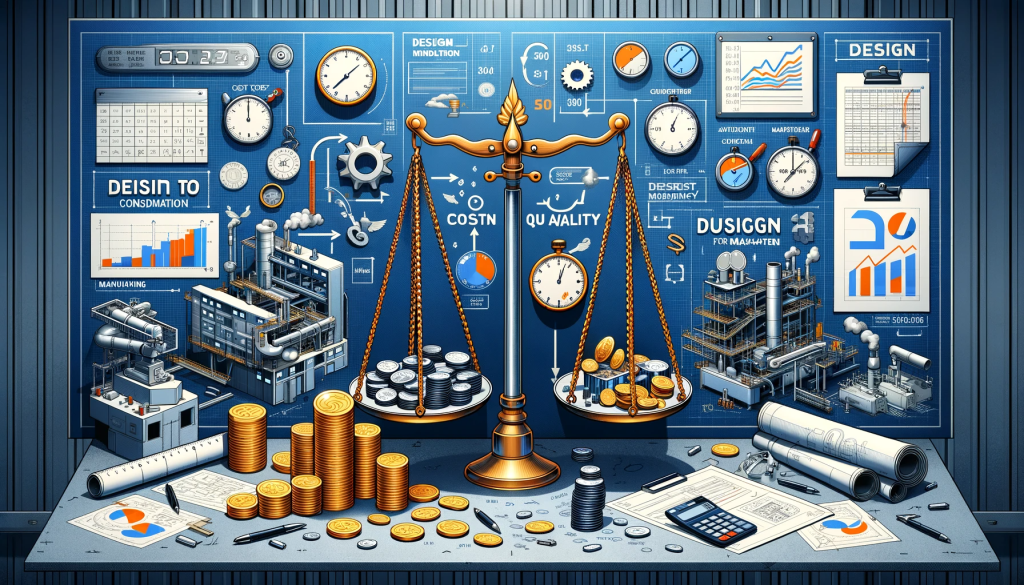Understanding Design to Cost
Design to Cost is like planning a budget-friendly vacation; it's about getting the most value without overspending. By considering costs at the design stage, companies can avoid expensive redesigns and ensure the product's affordability.
The Core of Design to Cost
Defining Target Cost: Establishing a cost ceiling for the product, akin to setting a spending limit for a project.
Cost Management Strategies: Implementing techniques to keep the design within the budget, similar to choosing cost-effective materials and processes.
Analyzing Results: Continuously reviewing the design to ensure it aligns with cost objectives, much like tracking expenses during a project.
Design to Cost Phases
1. Defining Target Cost
This phase involves setting a clear cost goal for the product. It's like setting a price limit for a house before you start house hunting. This target cost guides all subsequent design decisions.
2. Cost Management and Reduction Strategies
This stage is the heart of DTC, where various strategies are employed to keep costs in check:
Design Standardisation: Using common design elements across products, similar to using a template for multiple projects.
Use of Standard Parts: Opting for readily available components, akin to buying off-the-shelf instead of custom-made.
Geographical Considerations: Choosing manufacturing locations based on cost-effectiveness, like selecting a vacation spot that’s affordable.
Packaging & Transportation: Designing for efficient shipping, similar to packing light to avoid extra baggage fees.
Waste Minimisation: Applying lean manufacturing principles to reduce waste, akin to using resources judiciously in a project.
Maintenance Considerations: Designing for easy and cost-effective maintenance, like choosing a car that's cheap to service.
3. Analysing Results
This is where the design is evaluated against the cost targets, similar to reviewing a project budget to ensure you're on track.
Challenges in Design to Cost Implementation
Implementing DTC isn't without its hurdles. It requires a shift in engineering culture, where cost becomes a primary consideration in design decisions. Engineers need to be equipped with the right tools and knowledge to integrate cost management effectively into their design process.
How to Compare Costs
A practical example of DTC in action is comparing materials for a component, such as choosing between aluminium and stainless steel for a bracket. Factors like durability, weight, and cost per unit are considered to find the most cost-effective yet functional option. This process is similar to comparing different models of a gadget to find the best value for money.
Conclusion
Design to Cost is a strategic approach that aligns the design process with financial objectives. It's about making informed decisions that balance cost and functionality, ensuring that the final product is not only high-quality but also economically viable. As manufacturing continues to evolve, DTC remains a key player in the quest for efficient, cost-effective design solutions.

